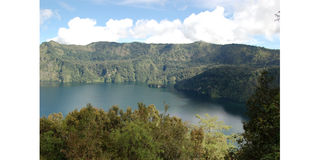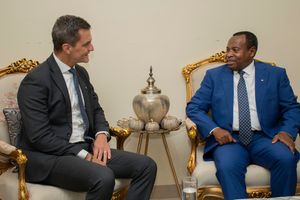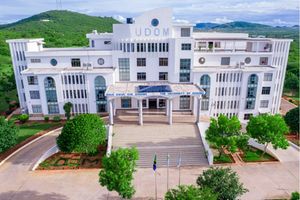TGDC seeks to generate 30MW from geothermal by 2025

Lake Ngozi
What you need to know:
- Scientists from the United States, New Zealand, Japan, Iceland and geothermally rich countries such as Kenya, Uganda, Ethiopia, alongside representatives from the UN camped in Mbeya in three days to discuss the Ngozi Geothermal Project
Mbeya. The Tanzania Geothermal Development Company (TGDC) has devised a strategic solution to enhance alternative sources of electrical energy, aimed at mitigating the impacts of climate change.
Additionally, TGDC has laid out plans to generate 30 megawatts, representing a portion of the total 70 megawatts, through the Ngozi Geothermal project located in the Mbeya District.
Project is located in the Ngozi Crater, approximately 20 kilometres south of Mbeya city.
TGDC Managing Director, Mathew Mwangomba, made this announcement yesterday during a three-day meeting attended by scientists from the United States, New Zealand, Japan, Iceland, and geothermally rich countries such as Kenya, Uganda, Ethiopia, alongside representatives from the UN environmental unit.
Mr Mwangomba stated that the convening of expert scientists was prompted by new findings that were obtained in the Western and Southeastern areas.
"TGDC, in collaboration with expert scientists from the United States, New Zealand, Japan, Iceland, as well as representatives from geothermally rich nations such as Kenya, Uganda, Ethiopia, and the UN environmental unit, will engage in discussions to identify the optimal approach for initiating resource utilisation without causing environmental harm," he noted.
According to Mr Mwangomba, the findings of scientific studies show that there are geothermal resources in the area where Ngozi project is situated and drilling will need a depth of 1200 metres to reach a temperature level of 250 degrees.
He elaborated that 16 regions in Tanzania have been pinpointed as possessing geothermal potential, boasting approximately 50 sources.
These resources are poised to bolster national revenue, foster job creation, and ensure a dependable electricity supply.
Eng Shakiru Kajugus, TGDC's Director for Business Development, added that research on the Ngozi project commenced in 2015 and has progressed to its final stages of implementation.
"Currently, we are in the process of drilling wells and conducting research to assess the extent of the available geothermal resource. This will enable us to commence generating 30 megawatts by the year 2025 as part of phase one, out of the total 70 megawatts," he explained.
Speaking on behalf of Mbeya Regional Commissioner Juma Homera, Chunya District Commissioner Mbarak Batenga said it is time for Tanzanians to be prepared to engage in the use of energy in order to get out of the electricity woes facing the country.
"We can see scientists from various nations attending this high-profile meeting that will propel the nation towards adopting reliable alternative energy sources," he said.
Mr Batenga said Tanzania would greatly benefit from the geothermal project and from other projects located in the Mbeya region, including the Ngozi project, whose generation is expected by 2025.
TGDC is a company wholly owned by the Tanzanian power utility company, Tanesco.





